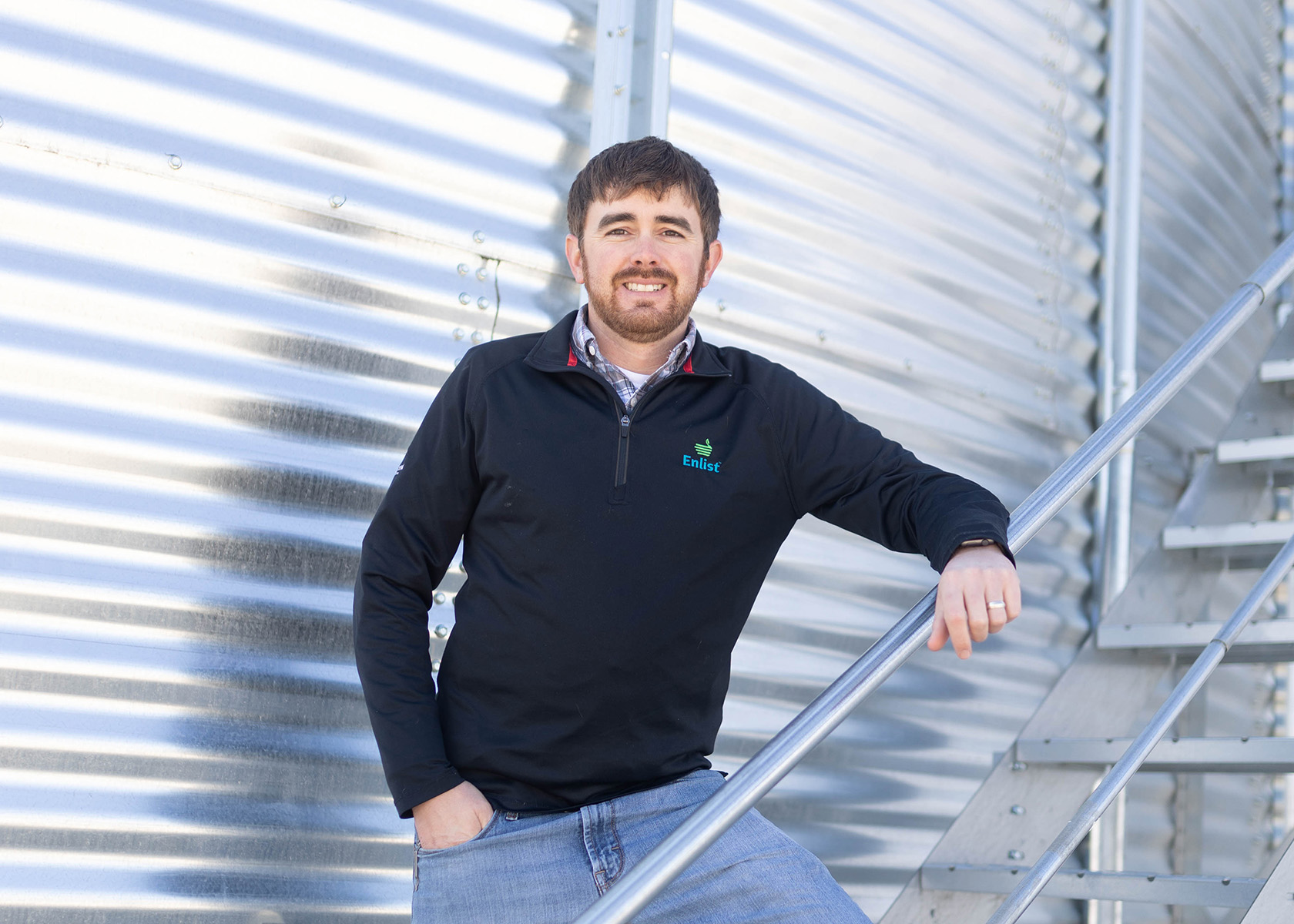
(Photo: Joclyn Bushman/Iowa Soybean Association)
Web-based platform communicates projects funded through checkoff investments
April 21, 2022
Like genetic, biological and agronomic developments, advances in ag technology are making a difference on the farm. Ag tech — tools that collect and process data — can help farmers maximize productivity, efficiency, profitability and sustainability. However, selecting and investing in specific ag tech tools and resources to best fit your operation can be challenging. Enter the Soybean Research and Information Network (SRIN).
SRIN communicates how checkoff dollars are invested at the state, regional and national levels on a range of agronomic and production topics. It also helps farmers see the potential of putting innovations to work on their farms.
“SRIN is a continually evolving, web-based platform,” says ISA Sr. Director of Research Ed Anderson. “Its purpose is to make clear and promote with farmers, the research they fund at the universities in their states and across the region.”
At the bleeding edge
Diving into SRIN’s offerings at soybeanresearchinfo.com, farmers can search for projects by topic, state, organization and region to learn the latest information. One example is ISA’s in partnership with Iowa State University and John Deere to explore ways to map soybean yield and protein and oil content at harvest. Researchers are also exploring how innovations in sensor technology, machine learning and analytics work together to precisely assess soybean growth, development, yield and quality to affect marketing decisions.
“It’s a good example of these private-public partnerships and leveraging checkoff dollars with other funding and in-kind support that will bring value to farmers,” Anderson says. “The ISA Research Center for Farming Innovation (RCFI) contributes technical expertise to support university researchers, while the soybean checkoff is leveraged with company support and equipment.
He adds, “This is the technology for being able to precisely map where in the field you’re getting what yield and seed composition quality at harvest. It’s a cool project demonstrating how strong genetics, good agronomic management and new agritechnologies combine to bring greater value to farmers.”
One other example of the growing number of ag technology projects is how the South Carolina Soybean Board invests checkoff funds in Clemson University research to develop tools from aerial image analysis to recognize poorly nodulated soybeans. In fact, there are many projects across the country involving drone technology. Soy checkoff funding from the Louisiana Soybean and Grain Research and Promotion Board allows a Louisiana State University researcher to determine how farmers can see crop variance with lower-cost, basic drones from major retailers.
“We want to talk to farmers about their short-term and long-term checkoff investments,” Anderson says. “And how they may benefit from them in the future and also where the progress is occurring today.”
Ready for the future
The lines between discovery and on-farm research are blurring, helping both researchers and farmers benefit faster from multidisciplinary efforts.
ISA Farmer Member Michael Fosdick, who farms near Sperry, has worked with the RCFI team doing long-term cover crop research for more than five years. The Des Moines County farmer says research partnerships make all the difference.
“In farming, there are lots of ways to raise a crop and invest those dollars,” Fosdick says. “At the end of the day, identifying where those dollars are best being spent is a huge win for any farmer.”
Back